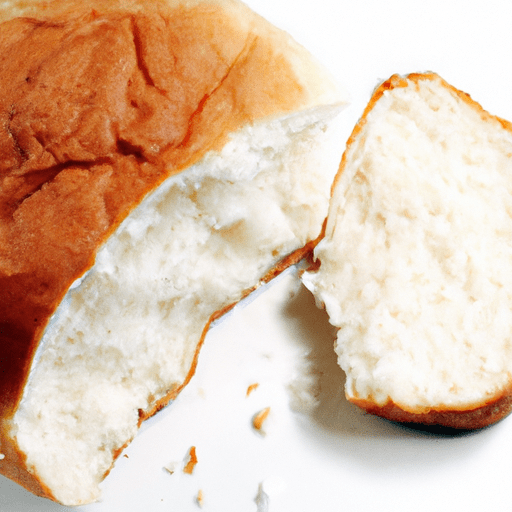The Delicious and Versatile Sandwich Roll
If you’re a fan of sandwiches, then you’re likely familiar with the humble sandwich roll. This versatile bread option offers a delightful combination of taste, texture, and convenience. In this blog post, we will explore the sandwich roll, its various uses in cooking, its nutritional value, and some interesting history and facts.
Taste and Texture
Sandwich rolls are often characterized by their soft, yet sturdy texture. They have a slightly chewy crust and a fluffy interior, creating the perfect vessel for all your favorite sandwich fillings. The bread itself has a mild flavor that beautifully complements a wide range of ingredients. Whether you prefer a savory sandwich with deli meats and cheeses or a vegetarian option filled with fresh vegetables, the sandwich roll is the ideal base.
Common Uses in Cooking
The sandwich roll is a staple bread choice for many classic and contemporary sandwiches. It is widely used in delis, cafes, and restaurants around the world. The possibilities are endless when it comes to creating sandwiches using rolls. Some popular choices include:
- Subs and Hoagies: The sandwich roll is commonly used in subs and hoagies, where it is sliced lengthwise and filled with various cold cuts, cheese, and condiments.
- Burgers: A hamburger isn’t complete without a soft sandwich roll to hold the juicy patty and other toppings in place.
- Paninis and Grilled Sandwiches: The robust nature of the sandwich roll makes it perfect for grilling or toasting. Paninis made with rolls are packed with flavor and have a satisfying crunch.
- Sliders: Mini sandwiches, known as sliders, are often made using smaller-sized sandwich rolls. These adorable bite-sized treats are perfect for parties and gatherings.
Nutritional Value
When it comes to the nutritional value of sandwich rolls, it’s essential to consider the specific ingredients used in their preparation. However, in general, sandwich rolls are a good source of carbohydrates, providing energy for the body. They also contain essential vitamins and minerals, depending on the type of flour and other ingredients used in the recipe.
To make healthier choices, opt for whole wheat or multigrain rolls, which offer more fiber and nutrients compared to their white counterparts. Additionally, the nutritional value also depends on the fillings and condiments used in the sandwich. Adding a variety of fresh vegetables and lean protein, such as turkey or grilled chicken, can boost the nutritional profile of your sandwich.
Interesting History and Facts
Sandwich rolls have a rich history dating back centuries. Rolls similar to the modern sandwich bread we enjoy today were first popularized in Europe during the Middle Ages. They were commonly used to hold various fillings, making them convenient for travelers, soldiers, and workers alike.
In America, sandwich rolls gained popularity in the early 20th century, thanks to the rise of delis and sandwich shops. The creation of submarine sandwiches, known as subs, played a significant role in the rise of the sandwich roll’s popularity.
Today, sandwich rolls are available in various sizes, shapes, and flavors, catering to different preferences and cultural influences. From the iconic baguette to the soft and doughy hoagie roll, this classic bread choice has evolved and adapted to meet the diverse sandwich needs of people worldwide.
Conclusion
With its soft texture and endless filling options, the sandwich roll remains a beloved choice for sandwich enthusiasts across the globe. Whether you’re a fan of classic deli-style subs or contemporary grilled paninis, the sandwich roll is a reliable and delicious bread option. So, next time you’re craving a tasty sandwich creation, reach for a fresh sandwich roll and let your culinary imagination run wild!
Sandwich Roll
Origin: The sandwich roll, also known as a sub roll, hoagie roll, or torpedo roll, originated in the United States. It is believed to have originated in the Italian-American communities in the Northeastern part of the country, particularly in the cities of Philadelphia and New York City.
Common Uses: Sandwich rolls are commonly used to make various types of sandwiches, such as subs, hoagies, and heroes. They are typically sliced lengthwise and filled with ingredients such as deli meats, cheeses, vegetables, and sauces. Sandwich rolls are versatile and can be used for both hot and cold sandwiches.
Nutritional Benefits: The nutritional benefits of sandwich rolls can vary depending on the specific recipe and ingredients used. Generally, sandwich rolls are a good source of carbohydrates, providing energy for the body. However, they can also be high in calories and sodium. Choosing whole grain or whole wheat sandwich rolls can increase the fiber content and provide additional nutritional benefits.
Unique Properties: Sandwich rolls have a unique shape and texture that make them ideal for holding fillings. They are typically soft on the inside with a slightly crusty exterior. The lengthwise split makes it easy to open the roll and fill it with various ingredients. The size and shape of sandwich rolls can vary, ranging from smaller rolls for individual sandwiches to larger rolls for sharing.
Historical Significance: Sandwich rolls have become an iconic part of American cuisine, particularly in regions with a strong Italian-American influence. They have been enjoyed for decades and have become a staple at delis, sandwich shops, and fast-food establishments across the country. The popularity of sandwich rolls has spread beyond the United States, and variations of this type of bread can be found in many countries worldwide.




Use the share button below if you liked it.
It makes me smile, when I see it.